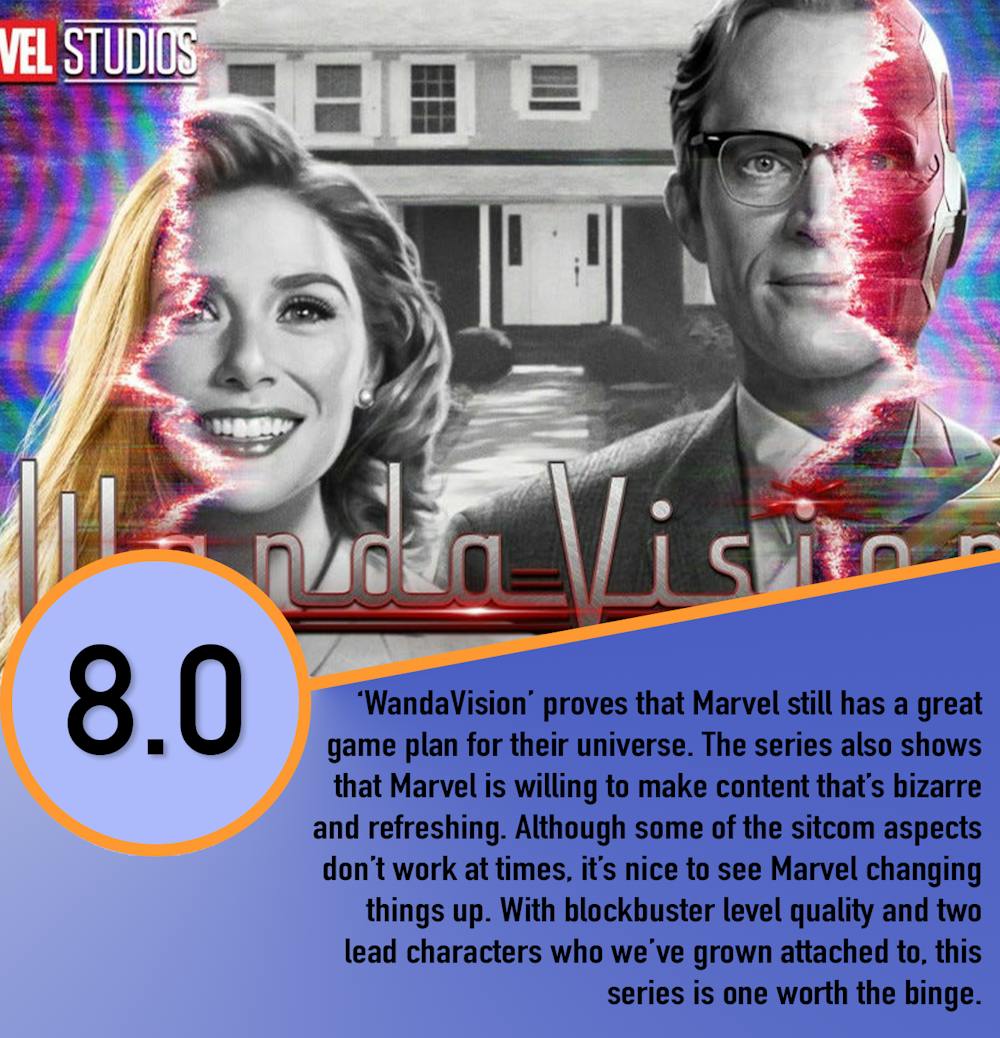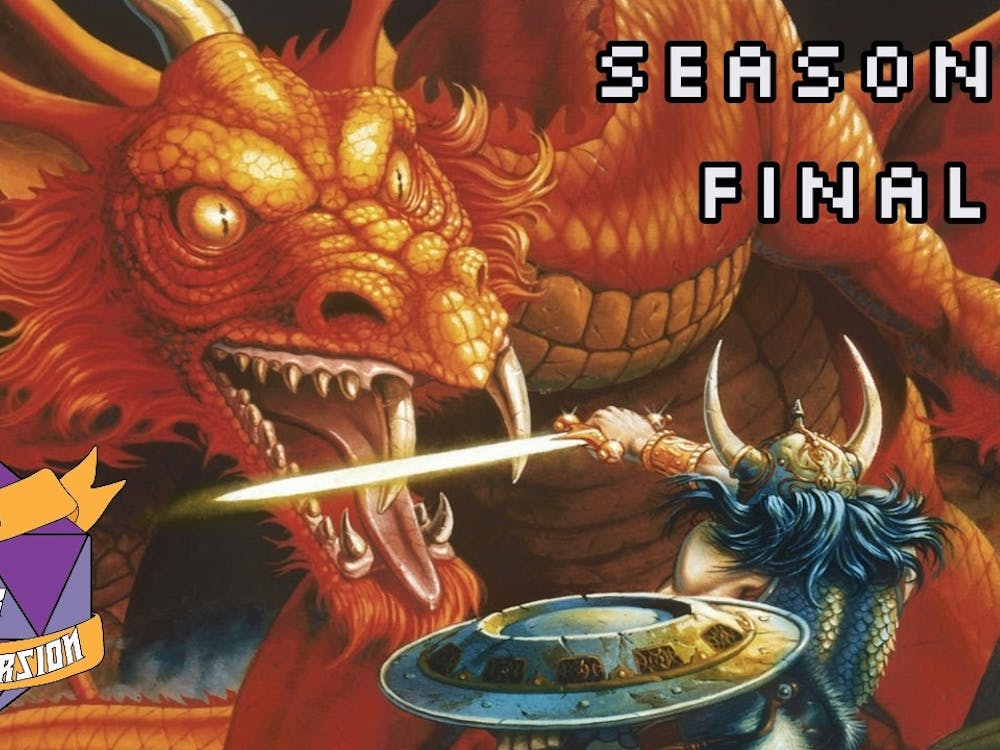
It’s been well over a year since we’ve received the last bit of Marvel content. Ever since Spider-Man: Far From Home was released in July of 2019, there’s been a year and five-month drought of Marvel films and television. With Black Widow, Eternals, and The Falcon and the Winter Soldier all getting bumped, WandaVision became our first look into where Phase Four of Marvel will go.
WandaVision follows Wanda and Vision after the events of Avengers: Endgame, where they find themselves within a sitcom reality. As the show progresses, more and more strange things begin to occur as the truth is slowly peeled back.
A great first step

Image from Den of Geek
Although WandaVision was originally going to be released after Black Widow, The Eternals, and The Falcon and the Winter Soldier, it oddly felt like a natural introduction to Phase Four. Since the show takes place within weeks after the events of Avengers: Endgame, audiences can witness various aspects of how Thanos’ actions have impacted lives. Spider-Man: Far From Home gave a glimpse of this, but it mostly was played off for comedy. WandaVison, however, takes the effects of The Snap and shows how both the people who survived those five years and those who disappeared are struggling to cope with billions of people suddenly returning from the dead.
Marvel also set up the show to introduce characters who’ll have bigger roles in the future. One of the characters involved in this series, Monica Rambeau, daughter of Maria Rambeau, makes her introduction as an adult in this series after being introduced as a child in Captain Marvel. The character will continue on in future projects, most notably Captain Marvel 2, so getting to follow and understand the character in this series was a great set up for her future character.
Giving Wanda the spotlight in the series allowed viewers to understand the deeper struggle of the character. Ever since her introduction in Avengers: Age of Ultron, we’ve understood that her character is deeply broken ever since her parents and brother were killed. Captain America: Civil War and Avengers: Infinity War solidified that she was heading down an unstable path; however, the character has officially been broken to her core now, leading her to desperately do whatever she can to reverse the tragic events of her past. Her character arc led to many mysteries surrounding the show, including how Vision is back after being killed off in Avengers: Infinity War. These mysteries became a driving force behind the show since the slow pace kept audiences trailing behind.
Marvel’s first mystery

Image from SuperHeroHype
As mentioned, there are many mysteries within this show. Some of them include why they are living in a sitcom, how is Vision alive, and how does Wanda have children? With the show being nine episodes, it was able to creatively and steadily build its mystery. This could throw some off since the first three episodes are traditional sitcom episodes, with a few clues sprinkled throughout hinting at what’s to come. Audiences expecting to see the traditional style of action and humor of Marvel films could be frustrated with this, but those who can stick with it and allow the story to unfold will be rewarded with an excellent and bizarre show that has never been done before.
Despite the incredible storytelling, there are a few drawbacks to the series. One of the issues that affected The Mandalorian was carried over into this series, and that’s the length of the episodes. There are countless episodes where it felt as if they could have tacked on an extra 10 or 15 minutes to allow the story to breathe a little, instead of trying to cram a truckload of information into a short 30-minute episode. So far, with Disney’s shows, it feels as if they’re simply being cheap and won’t allow for longer episodes. With the blend of sitcom and normal Marvel storytelling, there are too many episodes where the writers rush both of these elements. Leaning closer to having hour-long episodes would allow the sitcom aspects to play out while allowing the other storylines to carry on and develop further.
Another gripe against the show was having odd and frustrating misdirects that might leave viewers furious. For example, Quicksilver’s character is reintroduced in this film after being killed off in Avengers: Age of Ultron. However, the actor playing him wasn’t Aaron Taylor-Johnson, but instead Evan Peters, the actor who played the character in the X-Men films. With Doctor Strange 2 having the title In the Multiverse of Madness, it was exciting to see Peters play the role, since his interpretation was superior to Johnson’s, but the revelation of the character felt like a punch to the gut for fans of the Marvel Universe, as well as the X-Men films.
Slow starter

Image from Entertainment Weekly
Around episode four, the series kicks into high gear and ends satisfyingly. However, the first two episodes were a rough start. Since those episodes reflected classic sitcoms so well, it felt odd to start the series off like that. Little to no context is given as to what’s happening, leaving you confused about what you’re watching. Except for a quick moment here or there where you see that there’s something strange happening, you’re left watching a standard episode from the 50s and 60s. Episode three, “Now In Color”, reflects the 70s and progressed the story further, but was still left feeling very slow. Audiences who don’t have the patience to watch three episodes until the roof is blown off in episode four will probably drop out. However, those who can push through this slow start will be rewarded with an explosive ending.
Sources: IMDB (Spider-Man: Far From Home), Vox, IMDB (Captain Marvel II), IMDB (WandaVision)
Images: Den of Geek, SuperHeroHype, Entertainment Weekly
Featured Image: Review Geek
For more entertainment-related content, visit us at Byte BSU!


















